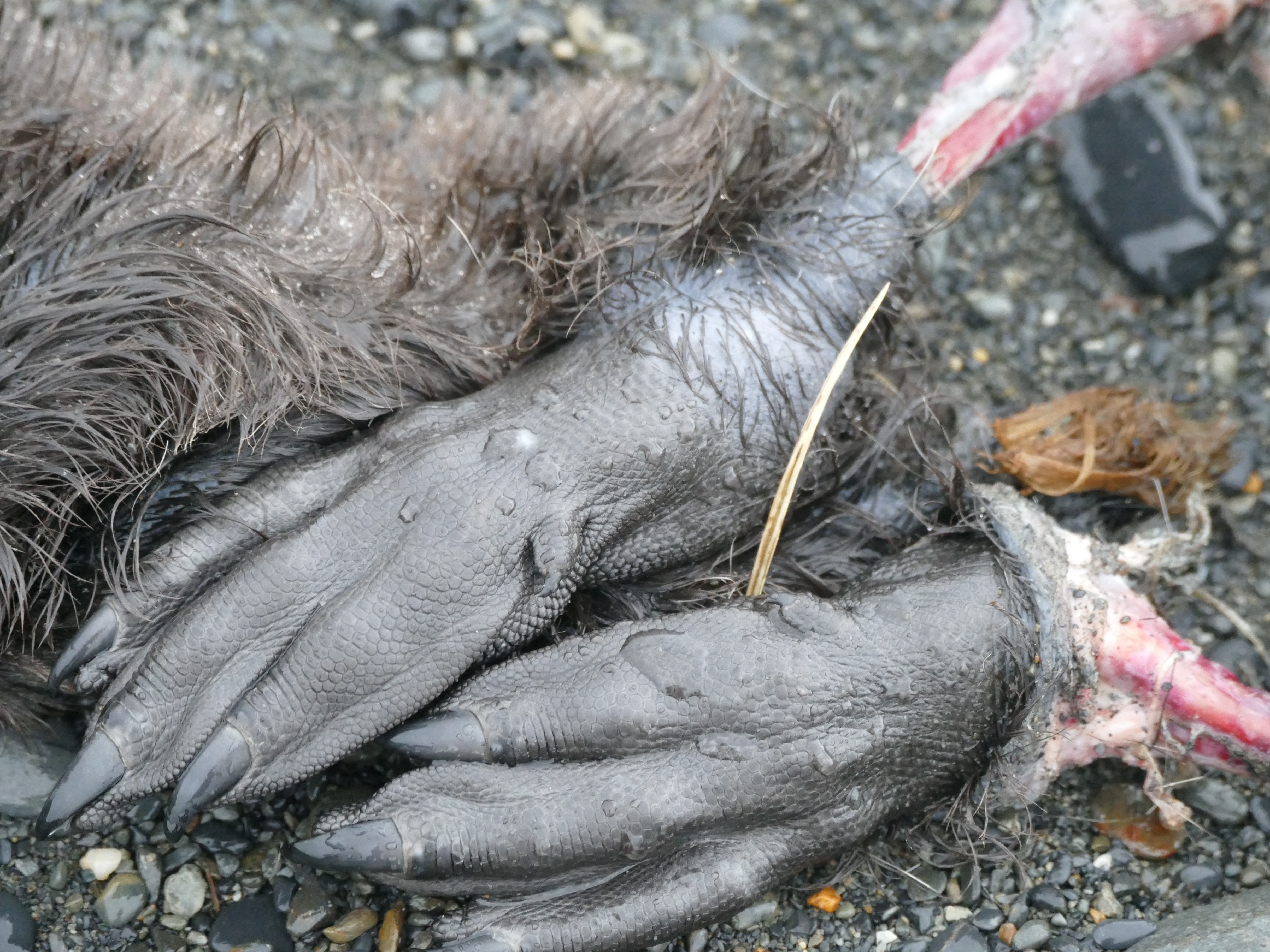
Penguin chicks lie among the pebbles. Still nearly complete, some of them, beaks agape and wings extended as if the raw spine might haul itself up and zombie-walk to the sea. Remnants are arranged into memento mori, reminiscent of Victorian child shrines kept by loving mothers.
Scraps of bone and feather mark the final disintegration, falling into cracks between cold stone and encroaching ice. Skuas hop and sheathbills scuttle among the carnage, uninterested in the living, pulling viscous eyes and wind-dried meat from the dead.
The chicks’ parents take to the water for the winter, chasing krill and living on the pack ice. By mid-March, most of them are gone. Scavengers, desperate to fatten up before the cold comes, feed on the unready youngsters. Penguins build no boats to put their children in when the water becomes safer than the land.

Fur seals in the South Shetlands in March are mostly males recovering from the exigencies of harem management during the season. Many are not huge but bulky and lithe. For them, the five hundred mile trip from the fertile beaches of South Georgia is just a jaunt, off for a little rest before the real swimming season begins. They too migrate to sea for the winter, leaving no-one behind.
April in South Georgia, though, the breeding isn’t done. Mothers corral their curious, questing younglings, calling their irritation. The pups wander off to cry in panic till reunited. A fur seal colony is a noisy place. By May, they are gone, crashing into the waves. The late comers, the slow coaches, the ones who have not learnt to live alone, will also die on the beach when migration begins.


The Moon drags the tide, the oceans slave not to magic but to gravity and the centrifuge of Earth. In Rossita harbor it hung over us, huge and orange, so bright it outshone the Milky Way. Mars came closer as we sailed through April. Such skies inspire questions: if John Carter, fighting for Dejah Thoris, fell over Curiosity rover, who would be more astonished? Is there Life on Mars?
We find life everywhere on Earth, even in the most barren places. Thermal vents in the never ending dark and on the starkest peaks. Microbes survive inside glaciers, yet another way Antarctica teaches us about how life works. Tiny crustaceans, fish, insects swarm, breed, migrate and die. Water means life, more than light, and Curiosity found evidence that water still flows on Mars. No little green men or ancient civilisations, but we are examining hydrates in the Horowitz crater and hunting for the sedimentary structures left by tiny specks of energetic determination. Movement is life.




Beautiful!
Thanks